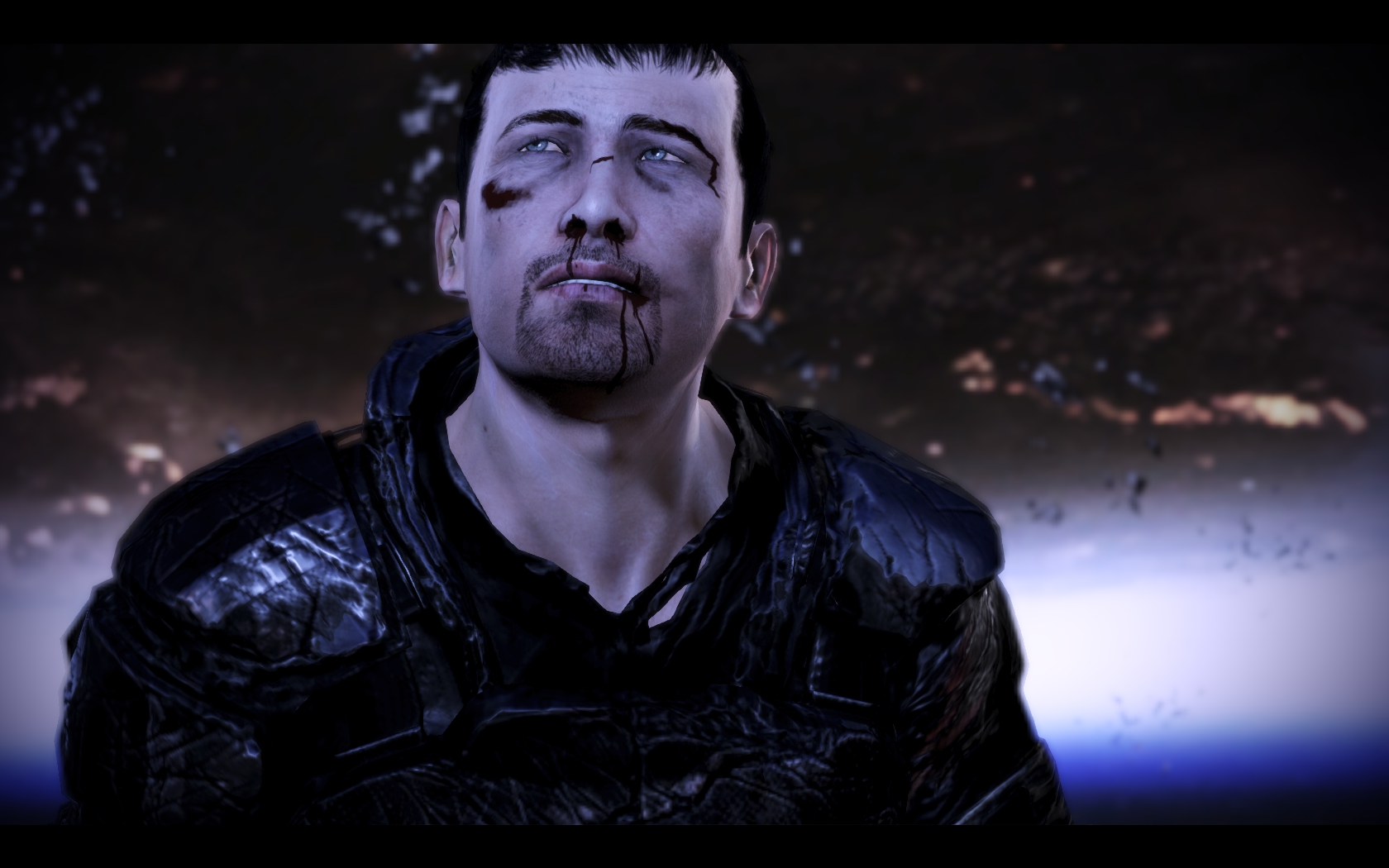In an attempt to inject some variety into this website and slightly dilute the over-excited Left 4 Dead coverage, here’s another round-up of game design grumbles. In case you missed my initial selection, you can find them here.

6. Bad cut-scene implementation
If there’s one thing more annoying than a cut-scene, it’s a cut-scene that is badly implemented, aggressively shoe-horning its way into your enjoyment like a spoilt child.
A lot of games are starting to integrate cut-scenes into the gameplay itself, following the example set (and subsequently ignored) over 10 years ago by the original Half Life. Players are given freedom to move around and interact while the scripted story element plays out around them.
Then we have the woeful Assassin’s Creed, a game packed full of interesting ideas that are implemented in oddly dissatisfying ways. In an attempt to imbue its cut-scenes with the same interactivity and immediacy as found in the Half Life games, Ubisoft opted to allow the player to move Altair during its lengthy dialogue exchanges. The problem is that you can only move him within a small area, invisible walls magically preventing you from wandering off while your friend waffles on ad nauseum.
In what they probably thought was an incredible innovation, clicking a button changes the camera angle, allowing you to view the drama from multiple viewpoints at any time. It’s not a bad idea in itself, but the dreary staging results in every possible camera angle sharing the same core element: utter boredom. There’s literally nothing to see, with scenes generally consisting of two characters standing still and talking at each other with generic medieval or cliched sci-fi phrases. It’s no better than a badly acted radio drama. Assassin’s Creed’s cut-scenes ultimately reek of compromise – they are neither properly interactive nor convincingly scripted, instead falling into a dull in-between.
This is just the tip of the iceberg when it comes to problematic cut-scenes. For instance, why do games so rarely allow you to skip, pause and replay cut-scenes? What happens if you have to leave the game momentarily due to a phone or doorbell ringing?
There’s a very simple solution to all this, of course. Don’t include cut-scenes in your game design.

7. FMVs when the engine is more than capable
Is there anything more irritating? You’re enjoying the beautiful, crisp, graphics of Psychonauts or Jade Empire when the visuals suddenly switch to a blocky, smeary, washed-out video that looks like it was shot on a broken Hi8 camera. This was a particular affliction suffered by games during the PS2/Xbox era, presumably those console’s technical limitations forcing the developer to resort to a pre-rendered video.
On the consoles themselves it wasn’t too noticeable, of course – given that they all ran at crappy resolutions on blurry televisions, the switch from in-engine graphics to pre-rendered graphics was smoothed over. On the PC versions, however, switching from a gorgeous 1280×1024 resolution to a 640×480, badly compressed Bink video was a startling experience that spoiled many a story. Although rubbish resolutions were a console trademark back then, I never did understand why the videos were always so badly compressed.
These days cross-platform games are no longer restricted to the same degree by ageing console tech, although this will inevitably become a problem once again in a year-or-two. Still, the increased power of the Xbox 360 didn’t stop Bioware from going down the pre-rendered video route with Mass Effect. Although the Unreal Engine and the console were more than capable of keeping up, the game is still riddled with badly compressed videos that pop up with annoying regularity.
Developers: If you can’t do your flashy story in-engine, don’t bother doing it at all.

8. Crap female characters
It’s hard to know where to begin. Gaming has a long and illustrious history of treating women as brainless sex objects. What makes this particularly galling is that what is supposed to be ‘sexy’ is so often conjured from the minds of relationship-starved, socially reclusing programmers who clearly have never spoken to a woman, let alone seen one naked.
Women characters in games seem to be almost entirely inspired by the porn industry – pneumatic breasts, bizarrely tiny waists even without corsets, botox lips. Presumably the aforementioned socially inept programmers’ only real experience of the opposite sex was from pornography.
There’s an endless slew of examples, of course. A couple spring to mind, not because they’re the worst, but because they could have been so much better. First there’s The Witcher, which has already courted considerable controversy due to its bizarre collectable sex cards and the seeming ability to sleep with every female character in the game. What’s irritating about its crassness is that in other areas the game features genuinely interesting women – sorceresses, doctors, warriors, witches, politicians – with detailed characterisation and worthy storylines. It’s not the presence of sex itself that is the problem in The Witcher, but its presentation: a little more restraint and its debauched world could have been a valid commentary; instead it comes across a little too voyeuristic.
Then there’s Carla Valenti in Fahrenheit (aka Indigo Prophecy). As one of the playable characters she’s a tough, intelligent policewoman in New York that is investigating a series of horrific murders. She’s a workaholic and is committed to finding out the truth, often at the expense of her own personal life. In other words, she comes across as a genuine person, thanks to decent writing and excellent voice acting. But then, halfway through, there’s the nude shower scene. And as the game descends into its third act ridiculousness, she unexpectedly declares her love for the murderer and indulges in a quick shag on an abandoned subway train. It’s bizarre, makes no sense, and feels extremely cheap and nasty. Given the effectiveness of her characterisation up to that point, I was offended on her behalf, until I remembered she was entirely fictional.
Thankfully there are exceptions – Alyx in Half Life, Zoey in Left 4 Dead, April Ryan in The Longest Journey, Bastila in Knights of the Old Republic, Jade in Beyond Good & Evil – but they’re still few and depressingly far between.

9. Crap male characters
Something to be glad of is that gaming is at least an equal opportunity offender when it comes to sexism. Accompanying games designers’ obsessions with porn-sculpted women, they have a similar affection for the kind of rippling biceps and testosterone-fuelled, closet gay subtext that went out of fashion with the 1980s.
The main culprit here is the common or garden space marine. Please, please would developers acknowledge that there are other characters to explore? Even other cliches and stereotypes would be welcome as they would at least offer some variety. Edge magazine had an interesting editorial a while back pointing out that the testosterone-laden model of male character design ignored an entire portion of gamers that identified with other traits of what it is to ‘be a man’.
Although escapism has its place, a growling muscle man is so far from my experience that it becomes irrelevant. Games need to draw on more influences than 80s action movies and Warhammer 40K. Thankfully there does seem to be a movement towards greater diversity, but so far it’s proving a slow and painful process, particularly on certain platforms.

10. Unnecessary padding
Perhaps my top personal pet hate when it comes to gamers and reviewers is when they complain that a game is ‘too short’, simply because it is under some arbitrary playtime value. 10 hours seems to be the randomly assumed length of a decent game – above that and games get extra points, and drop below it at your peril.
I say the shorter the better. While there are exceptions, such as role-playing games and online games, when it comes to single player titles a short playing time is often what makes the difference between a good game and a great game. A short game can be a focused, tight experience, with every minute contributing something towards the overall experience and not one second wasted. You’re thrilled from start to finish.
Take Call of Duty 4, for example. I completed it in a single weekend and, while it was a short game, it was also the best single player experience I’ve had for years: taut, precise, exhilarating. Same goes for the Half Life 2 episodes – they don’t waste any time, so everything that happens is of high quality. In fact, my main criticism of the original Half Life and Half Life 2 is that they are both too long.
Perhaps the best recent example of unnecessary padding is Far Cry 2, which is a superb game diluted with pointless hours of trudging about and needless repetition. Rather than attempting to create an epic with very little content, Ubisoft should have made an eight hour adventure, retaining all the excitement, fun AI and open world shenanigans without all the filler.
Because that’s all it is: filler. When making films or writing books, there’s a very simple rule: if a scene doesn’t have a specific purpose, remove it. Game designers need to look at their creations with the same critical eye: is this level, or this mission, doing something new and interesting and important, or is it just more of the same? Call of Duty 4 understands this: it explores a small number of ideas with perfect clarity and high quality execution, then finishes. Infinity Ward could have made it twice as long by including more levels, but that wouldn’t have made it a better game.
None of this is to say that short games are automatically great, of course. A short game can be just as bad as a long game. But there’s nothing more tragic than seeing a potentially great game reduced to overall mediocrity due to a misplaced need to sate the desires of the inexplicable ‘10 hours or more!’ brigade.
And for fear of being accused of unnecessary padding, I’ll stop here.




0 Comments
r4 games · May 17, 2009 at 12:59 pm
I really hate the female characters in the game over all. To they are really useless or they have added it to game more commercial value probably.
Ben · May 4, 2010 at 9:32 am
I must say I almost completely disagree. First, the crappy male and female characters should be combined into “crappy characters” which itself can be attributed to “crappy writing”. Video games are now where comics were in the abysmal 1990s – all style and no substance.
They just want it to look as good as possible, while the actual script, dialog and character development is a slightly lower priority than the catering service. I just hope video game developers adopt the same focus on high quality writers that comics came to see the value of ten years ago.
What I really disagreed with, though, was length. Call of Duty 4 took me five hours to beat. It cost me $60. That’s $12 per hour. For $50, Final Fantasy VIII took me over 100 hours to beat.
Far Cry 2 just lacked direction entirely and I never even beat it, so I’m not saying that an empty experience should drag on for as long as possible, but while substance should be the top priority, length should be a close second. If I’m paying the same price for a five hour game that I pay for a fifty hour game, I want the most for my money.
Simon Jones · May 5, 2010 at 1:57 pm
Ben – you’re right about writing. There are some exceptions, though there’s a long way to go yet.
From what you’ve written it sounds like you’re not really disagreeing with me on length. You’re actually addressing a separate point entirely, which is price. I agree that Call of Duty 4 could be considered too short if you were to buy it at its maximum price – that’s why I didn’t own it for a long, long time after its initial release, because I refused to pay the full price.
Price, however, is determined by the market and the publisher and the shops. It’s a very separate issue to the game design itself.
I’d say the solution is for games to be cheaper, not for games to be made artificially longer just to give the illusion of better value for money.